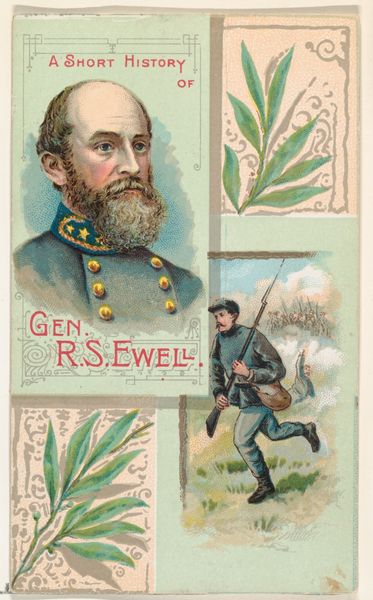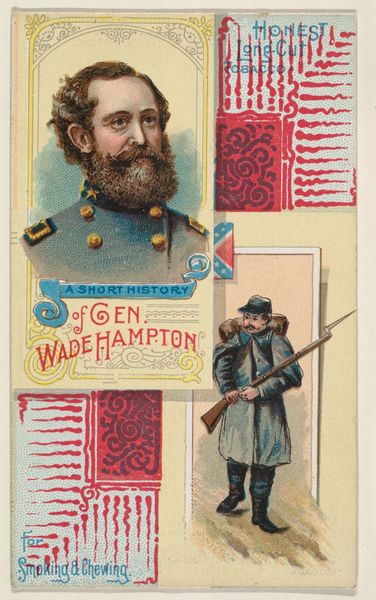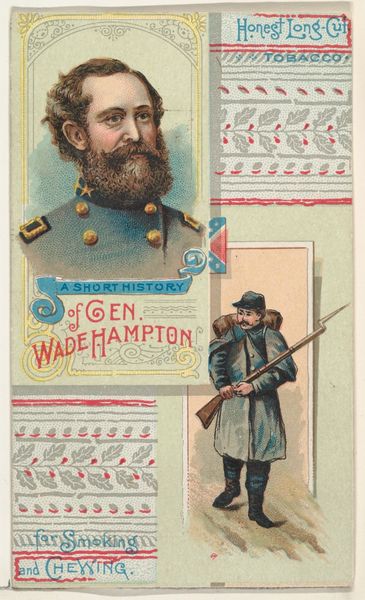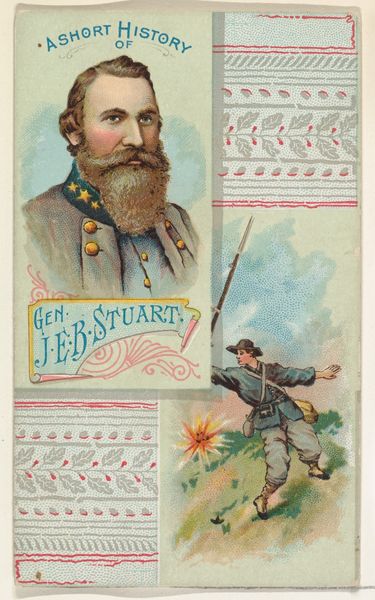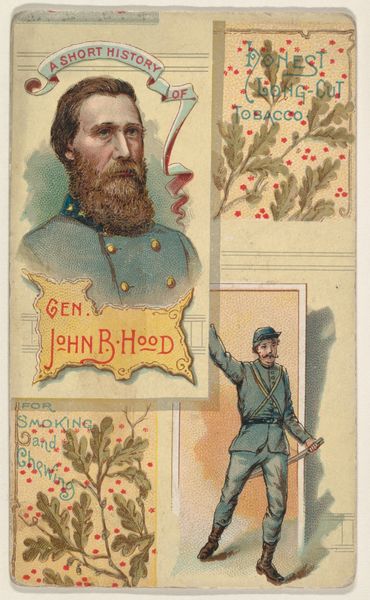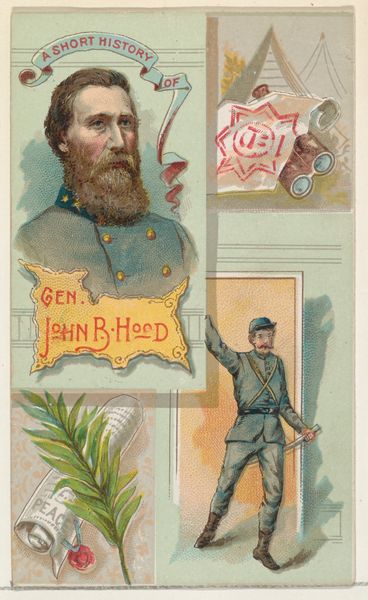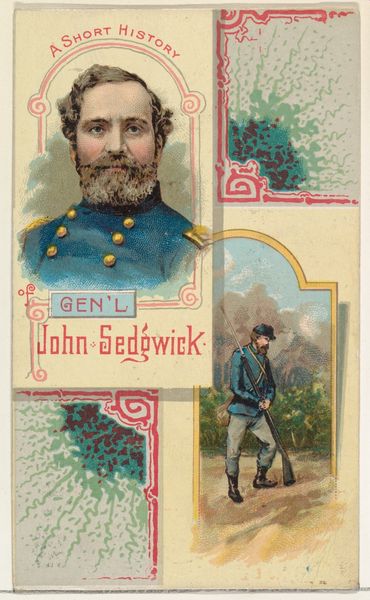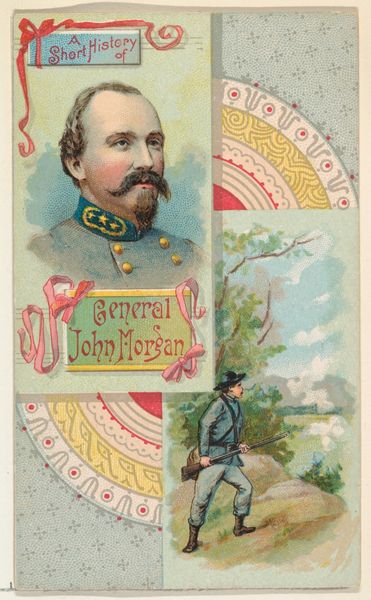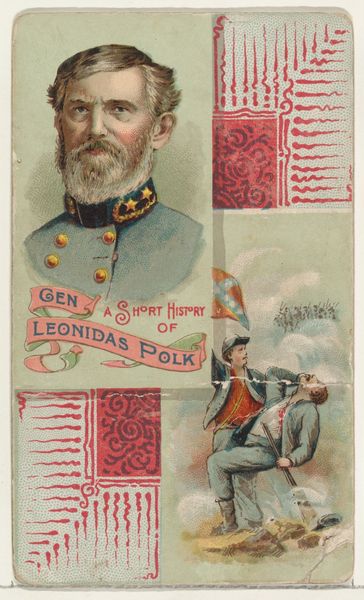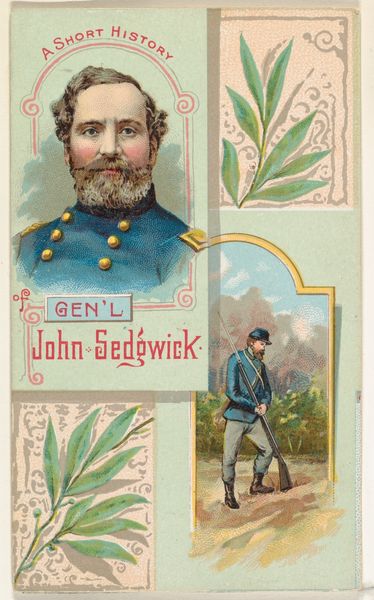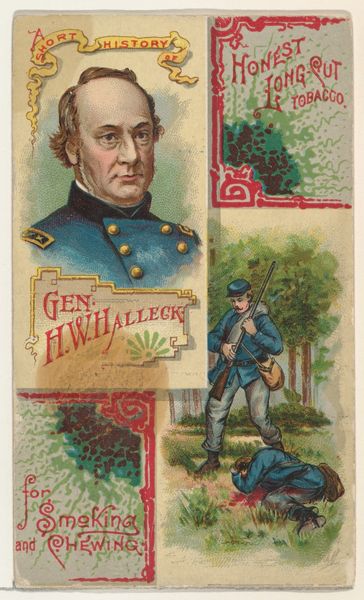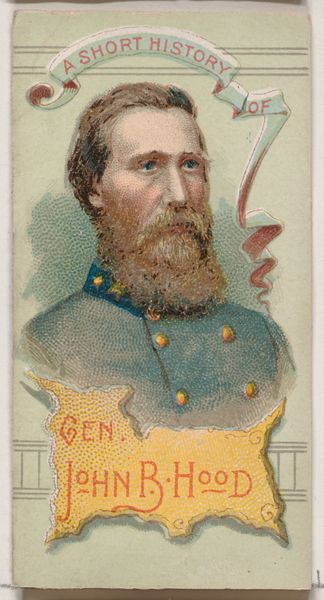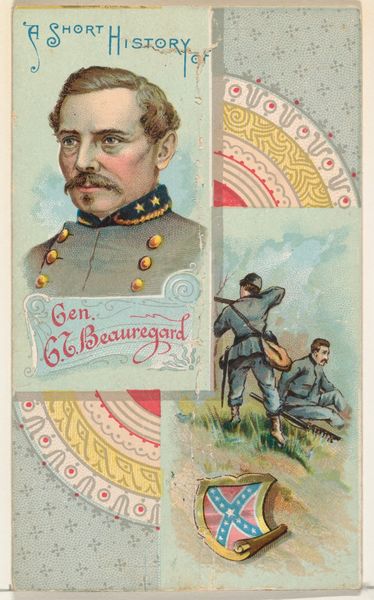
A Short History of General R. S. Ewell, from the Histories of Generals series (N114) issued by W. Duke, Sons & Co. to promote Honest Long Cut Smoking and Chewing Tobacco 1888
0:00
0:00
drawing, mixed-media, coloured-pencil, print
#
portrait
#
drawing
#
mixed-media
#
coloured-pencil
#
water colours
# print
#
coloured pencil
#
men
#
genre-painting
#
history-painting
#
academic-art
#
mixed media
#
watercolor
Dimensions: Sheet: 4 3/16 × 2 1/2 in. (10.7 × 6.4 cm)
Copyright: Public Domain
Curator: What a curious artifact. This is "A Short History of General R. S. Ewell," a mixed-media print from 1888 created by W. Duke, Sons & Co. as a promotional item for their tobacco products. Editor: It's striking how the composition divides itself into distinct visual registers, almost like a storyboard. The portrait seems lifted from an entirely different context than the skirmish below. The flat, decorative borders have a peculiar effect on the reading of depth. Curator: The juxtaposition is precisely the point, isn’t it? This isn't merely a portrait; it's a piece of marketing, entwining the romanticized image of a Confederate general with the act of consuming tobacco. The very phrase, "Honest Long Cut," attempts to legitimize both the product and the historical figure through association. Editor: You're right, the text infuses itself within the visual language—but also dictates how one processes it. The color choices and contrasting styles vying for my attention. Notice how Ewell’s soft watercolor portrait is carefully set in contrast with the sharp reds and whites of the abstracted borders. Curator: Indeed. It is a curious form of historical revisionism happening in plain sight, using the genre of "history painting," framing the Confederacy as somehow noble, right after the Civil War. Advertising's reach extends beyond commerce, subtly shaping collective memory and valorizing figures with highly questionable legacies. Editor: So, beyond the disturbing political messaging, how does its formal structure underscore that function? The symmetry feels intentionally disrupted. It's meant to draw the eye but also feels unsettling—even with its delicate rendering. The way the chaotic battle is contained, made consumable, that is truly disturbing. Curator: Precisely, by distributing these cards, W. Duke, Sons & Co. participated in a broader cultural project: constructing and perpetuating a narrative of the “Lost Cause.” In doing so, they actively disregarded the pain and injustices inflicted upon Black Americans. Editor: Now I see the significance of its disruptive elements as a perversion—as well as a formal composition that elevates product, politics, and social norms for sale. Curator: Absolutely, considering it within its social milieu offers a far more comprehensive understanding of this innocuous little card. Editor: Yes, it's hard to look away from its implications once the layers start peeling back.
Comments
No comments
Be the first to comment and join the conversation on the ultimate creative platform.
